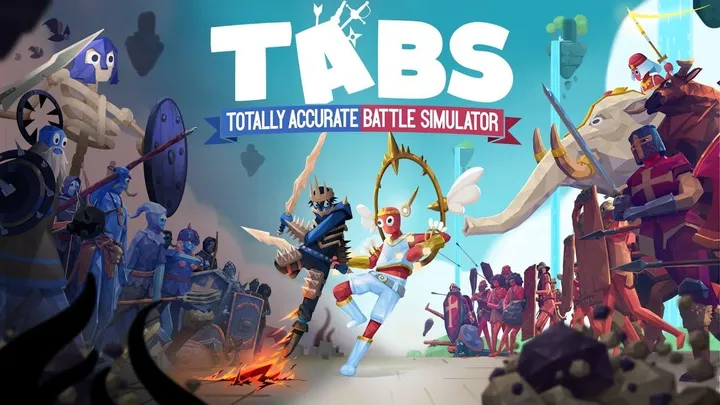Introduction
Gorilla Tag, created by Another Axiom, is a groundbreaking VR multiplayer game where players use only their arms to run, jump, and climb in a world without traditional locomotion. While the game’s unique movement system is what makes it exhilarating, it also introduces a significant issue: motion sickness and physical strain. For many players, this problem defines the difference between loving the game and quitting in frustration. This article explores how motion sickness and physical fatigue manifest in Gorilla Tag, how players adapt, and what the broader implications are for VR design.
The First Encounter with VR Discomfort
When new players first step into Gorilla Tag, they are often unprepared for how physically intense the experience is. Unlike VR games that use teleportation or smooth locomotion, Gorilla Tag requires players to swing their arms and push themselves forward manually.
The result is immediate: some feel exhilarated, while others experience nausea, dizziness, or imbalance within minutes. This early discomfort creates a steep entry barrier. Many players must decide whether to endure the initial sickness or step away from the game altogether.

The Science of VR Motion Sickness
VR motion sickness, also known as cybersickness, occurs when the brain receives conflicting signals. In Gorilla Tag, your eyes tell you that you are moving quickly through space, but your inner ear (vestibular system) senses that your body is stationary.
H3: Symptoms Commonly Reported
- Nausea and stomach discomfort
- Sweating and dizziness
- Headaches after extended play
- Eye strain and blurred vision
These symptoms discourage long sessions and highlight a core challenge of VR locomotion: creating immersion without overwhelming the body’s sensory systems.
The Role of Physical Strain in Gameplay
Beyond motion sickness, Gorilla Tag demands significant physical effort. To move quickly, players must swing their arms forcefully, climb walls, and vault over obstacles. This level of exertion often leads to sore muscles, fatigue, and even minor injuries.
H4: Common Physical Strains
- Shoulder and wrist pain from repetitive motion
- Back strain from overextending in climbing
- General fatigue after extended play sessions
For younger players, this often feels like a fun workout. For older or less physically active players, it can be a barrier to long-term engagement.
Adaptation in the First Week
Most Gorilla Tag players report that the first week is the toughest. The body and brain need time to adapt to the unusual demands of VR locomotion. With repeated exposure, motion sickness symptoms often lessen, and muscles adapt to the physical strain.
Players develop new techniques: smaller arm movements to conserve energy, controlled climbing methods, and pacing strategies to prevent exhaustion. This adaptation reflects the body’s remarkable ability to recalibrate to new sensory and physical demands.
Community Strategies for Coping
The Gorilla Tag community has developed countless tips for overcoming discomfort. Online forums and Discord groups frequently share advice for newcomers struggling with sickness or fatigue.
H3: Popular Coping Strategies
- Limiting early sessions to 10–15 minutes
- Staying hydrated before and during play
- Using VR fans to provide real airflow cues
- Practicing in private lobbies before joining competitive matches
These shared strategies highlight the supportive nature of the Gorilla Tag community, where veterans help newcomers survive the adaptation curve.
The Psychological Element of Discomfort
Motion sickness in Gorilla Tag is not just physical—it’s also psychological. The fear of becoming sick often amplifies symptoms, creating a feedback loop where anticipation of discomfort makes it worse.
Similarly, frustration with physical strain can lead to feelings of inadequacy, especially when players compare themselves to skilled veterans who move fluidly through the maps. This psychological barrier can be just as significant as the physical one, shaping who continues to play and who gives up.

The Long-Term Health Perspective
While Gorilla Tag can cause short-term discomfort, it also offers long-term benefits when played responsibly. Regular play provides cardiovascular exercise, improves coordination, and builds upper-body strength. For some players, the game functions as a fun fitness routine disguised as social entertainment.
However, overuse and lack of moderation can lead to chronic strain injuries. The key is balance—treating Gorilla Tag as both a workout and a game, with adequate rest and recovery built into play schedules.
Developer Responsibility and Game Design
Another Axiom has faced the challenge of balancing Gorilla Tag’s unique locomotion with accessibility. The developers intentionally avoided artificial movement systems, which often reduce motion sickness but break immersion.
H4: Possible Design Solutions
- Adjustable speed settings for beginners
- More tutorials focusing on safe movement techniques
- Optional comfort modes that provide grounding visual cues
By continuing to refine accessibility options, developers can reduce the exclusionary effect of motion sickness without compromising the core gameplay identity.
Gorilla Tag as a Case Study in VR Locomotion
The issues faced in Gorilla Tag reflect broader VR design challenges. Locomotion is one of VR’s most difficult problems, with no perfect solution that satisfies both immersion and comfort. Gorilla Tag’s arm-based movement is both revolutionary and problematic, making it a prime case study for researchers exploring VR sickness.
By examining how players adapt—or fail to adapt—developers across the VR industry gain insights into designing future locomotion systems that are more inclusive and sustainable.
Toward a Healthier Gorilla Tag Experience
Ultimately, the path to overcoming motion sickness and strain in Gorilla Tag lies in moderation, community support, and thoughtful design. Players must listen to their bodies, take breaks, and gradually build tolerance. Communities must continue to share knowledge and support newcomers. Developers must experiment with accessibility options to expand the game’s reach.
When these elements align, Gorilla Tag transforms from a frustrating ordeal into a joyful, physically engaging VR playground where movement feels natural and exhilarating.
Conclusion
Gorilla Tag’s brilliance is inseparable from its challenge. By forcing players to move their bodies in new ways, it unlocks unmatched immersion but also exposes them to discomfort. Motion sickness and physical strain remain the most significant issues shaping the player experience. Yet, for those who endure, the rewards are immense: fitness, community, and a thrilling new form of play. In tackling these issues, Gorilla Tag not only defines itself but also helps chart the future of VR locomotion.

















